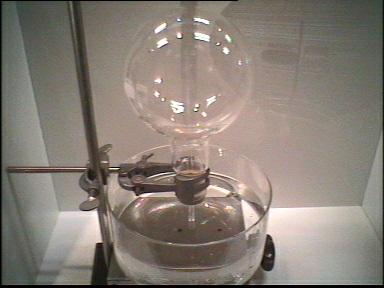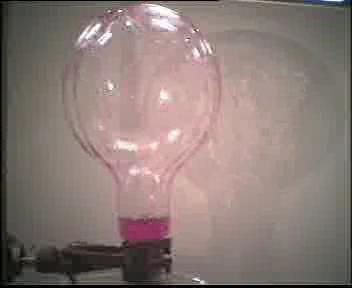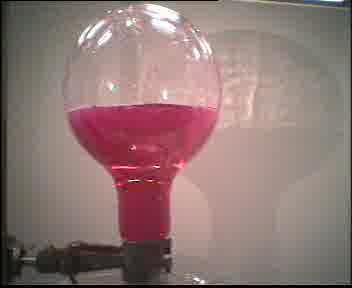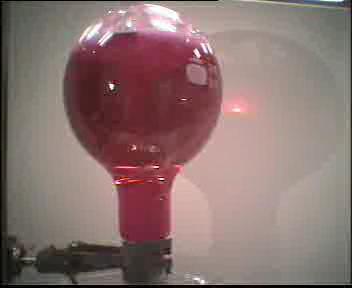| Photo 1: |
Experimental setup: A flask is filled with ammonia gas. It is then
closed with a Pasteur pipette and placed upside down over a water bath,
to which a few drops of phenolphthalein have been added. |
| Photo 2: |
The gas dissolves in the water. A basic ammonia solution forms (NH3
+ H2O ® NH4+
+ OH-), as indicated by the dye. As this process takes place,
the contents of the flask become underpressurized, and water is sucked
in. |
| Photos 3 + 4: |
The water level rises until the flask is completely filled. |
The solubility of ammonia in water is quite high. At 20° C, 702 liter
ammonia dissolve in one liter water. That is why one refers to an "absorption"
of the gas in the solvent.
The pressure in the flask is not caused by the ammonia molecules. Ammonia
molecules going into the water causes a low pressure in the flask, and
it is this low pressure which is responsible for water to be drawn upward
against the force of gravity.







